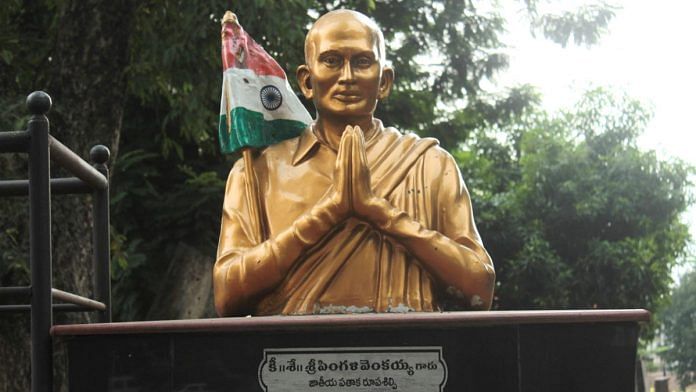New Delhi: The Indian flag is a symbol of the country’s sovereign state, its history and culture. Yet, little is known about the person who designed the Tricolour. While the flag has undergone changes in the past decades, its basic framework is credited to Pingali Venkayya.
Meeting Mahatma Gandhi
Born on 2 August 1878 in Andhra Pradesh, Venkayya was educated at Cambridge and grew up to become a polymath — with interests in geology, agriculture, education and languages.
He met Mahatma Gandhi in South Africa during the Second Boer War (1899-1902) when he was posted there as part of the British Indian Army. After returning to India, he dedicated himself to the creation of a national flag for the country. In 1916, he even published a booklet on flags of other nations with various samples.
In 1921, Venkayya met Gandhi in Vijayawada and presented a rudimentary design of the flag. It consisted of two red and green bands to symbolise Hindus and Muslims, respectively — the two major religious communities in the country.
Gandhi made some changes to it, added a white band to symbolise peace and a charkha to represent self-reliance — on the recommendations of educationist Lala Hansraj.
According to a report, Gandhi wrote in his journal Young India: “We should be prepared to sacrifice our lives for the sake of our national flag. Pingali Venkayya, who is working in Andhra National College Machilipatnam, has published a book describing the flags of countries and designed many models for our own national flag. I appreciate his hard struggle during the sessions of the Indian National Congress (INC) for the approval of the Indian national flag.”
Prominent historian Ramachandra Guha notes that a Congress committee had in 1931 changed the red band to saffron. It also re-positioned the bands with saffron on top followed by white and then green. The charkha was placed on white band in the middle.
“Endorsing these changes, Gandhi observed that ‘the national flag is the symbol of non-violence and national unity to be brought about by means strictly truthful and non-violent’. The tricolour, he wrote, ‘represents and reconciles all religions’.”
How Ashok Chakra replaced the charkha
The INC officially adopted the flag after these changes were made. Post-Independence, a national flag committee was also formed under President Rajendra Prasad. It used Venkayya’s tricolour design but replaced the charkha with the Ashok Chakra. The question of who recommended this change is still unclear.
Laila Tyabji, founder of textile NGO Dastkar, wrote that it was her parents — Badruddin and Surayya Tyabji — who had suggested the change.
Nicknames for multifaceted Venkayya
An interesting fact about Venkayya was the sheer number of nicknames given to him. He was known as Jhanda Venkayya for his role in designing the flag. An avid gemologist, he was also called Diamond Venkayya, and for his knowledge of Japanese language, Japan Venkayya.
According to a report, he was also known as Patti Venkayya or Cotton Venkayya because he “dedicated most of his time researching staple varieties of cotton and did a detailed study on a particular variety called Cambodia Cotton.”
Lost legacy
After India gained Independence, Venkayya’s contributions to the freedom struggle and in designing the national flag were lost in the archives of history.
“My grandfather was a true patriot, but totally forgotten after Independence,” said his grandson Ghantasala Gopi Krishna.
Venkayya passed away in a state of penury on 4 July, 1963.
His legacy was revived in 1992, by former Chief Minister of Andhra Pradesh N.T. Rama Rao, when he included Venkayya’s statue as part of the 31 statues of prominent state icons in Tank Bund, Hyderabad.
In 2009, a stamp was also issued to commemorate him, and the Andhra Pradesh government recommended his name for the Bharat Ratna in 2014. Venkayya was, however, not considered for the honour that was eventually bestowed on cricketer Sachin Tendulkar and scientist C.N.R. Rao that year.
In 2015, the then Urban Development Minister M. Venkaiah Naidu renamed the AIR Vijaywada after Venkayya and unveiled his statue on its premises.
Venkayya was clear that the flag must command respect from all countrymen and should not feature any object associated with any specific community. For Venkayya, the aspiring nation needed a flag to integrate Indians within a common banner — one that stood for sacrifice, peace and unity.
Also read: India must mark 23 January as National Flag Day: Naveen Jindal



